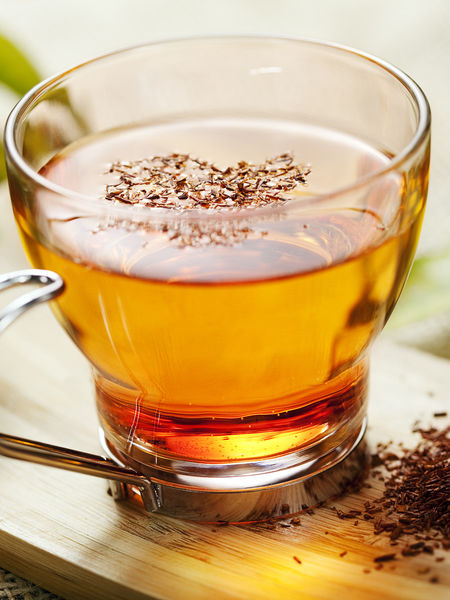ROOIBOS: Thriving Despite Severe Drought


Enthusiasts for rooibos in Europe, Asia, and the Middle East are cheering the fact that the South African plant is thriving once again and harvests will meet the growing demand, particularly in the largest rooibos-consuming countries of the UK, Germany, the Netherlands, Japan, and the U.S.
ROOIBOS ONLY GROWS IN SOUTH AFRICA
It was the Dutch tea-traders of the 1700s who first named this tisane rooibos (red bush) and first popularized it as a cheaper alternative to Camellia sinensis. Despite the obvious savings, rooibos never caught on outside of South Africa until the 1930s, and even then only modestly. Since the 1970s, however, its popularity has exploded worldwide despite the fact that rooibos can only be grown in one area of one country and the harvests are modest compared to those of true tea which grows in more than 35 countries. Production has increased yearly and estimates for 2019 are for 20 to 30% higher yields if there is no more severe drought. It is likely that climate changes are the cause of the recent drought, the most severe in more than two decades.
Both organic and non-organic rooibos are farmed on more than 65,000 hectares in the Cederberg and Sandveld regions (Fynbos Biome) in the Cape Folded Mountains of the Western Cape and the Bokkeveld area (Succulent Karoo) of the Northern Cape of South Africa. These two areas have produced between 10,000 and 18,000 tons per year with global consumption topping 15,000 tons in recent years. That translates to about 6 billion cups of rooibos tea or one cup per every human on earth. About half of the rooibos grown is consumed locally in South Africa.
Rooibos is one of 278 species of the Aspalathus genus and is known as Aspalathus linearis which provides one wild and one cultivated rooibos plant. The word linearis describes the plant’s linear growing structure which creates long, needle-like leaves.
HOW ROOIBOS GROWS
Although rooibos is a hardy dryland crop needing little irrigation, it must be grown in specific conditions: a winter rainfall of 200 to 450 mm per year, Mediterranean climate, and deep, coarse, and acidic sandy soil. Temperatures are also a factor, and range from 0 to 45°C. (32 to 113 °F.)
Rooibos provides an average of four crops over an average lifespan of six years. It is grown to a height of 2m and has a large enough tap root to grow downward to 3m into the soil, so frequent irrigation is not necessary. Many farmers, however, are minimizing tillage to preserve the moisture in the soil as a response to the recent drought.
Botanically, rooibos is a member of the legume family of plants and blooms in early spring with yellow flowers, each producing a legume with a single seed inside that “pops” from the heat when ripe and falls to the ground. Farmers gather the fresh seeds by sifting through the sandy soil around the plants, and using those seeds to plant new crops each spring. The harvest is in the summer.
HOW IT IS PROCESSED
Farmers harvest rooibos by bundling the leaves, then they are sorted, cut or bruised (similar to leaves of the Camellia sinensis) and then oxidized for up to 12 hours which brings out the leaves rich rust-red color and earthy flavor. The enzymatic process of oxidation changes the rooibos leaves from green to their distinctive reddish color and the longer they are oxidized the redder the leaves become and the deeper the flavor in the cup. The final step is to dry the leaves in the sun.
The category of green rooibos was first developed in the 1990s. Green rooibos is not oxidized but is cut then dried immediately after harvesting. It is lighter in color yet contains the same high quality polyphenols and anti-mutagenic properties as oxidized rooibos leaves. Green rooibos will retain its natural mineral-like flavor, sharper than the grassy taste of green tea, and keeps its pale green color.
HEALTH BNEFITS
In the plant kingdom, the flavonoid aspalathin is only present in rooibos and scientists are studying how it may help decrease the production of certain adrenal hormones and help balance blood sugar levels and absorb glucose better, a boon for diabetics. It also has anti-mutagenic qualities that could prevent certain cancers. Future studies will also explore how rooibos can impact metabolic diseases, Alzheimer’s disease, allergies, chronic inflammation, chronic wound treatment, and hypoxia or exposure to high altitudes.
The polyphenols in rooibos, like those in true tea, are anti-inflammatory agents, anti-viral, and protect the body from free radicals which could cause cancer and heart disease. Other health benefits being studied are how the elements in rooibos can act as a bronchodilator to relieve respiratory distress, reduce high blood pressure, and support the formation of HDL cholesterol while reducing LDL cholesterol to form in the blood vessels.
Like all herbals or tisanes, rooibos is caffeine-free.
HOW TO BREW
Brew rooibos as you would any tisane, with fresh spring water or filtered water brought to a boil or between 200 and 212°F. Add 2g of loose-leaf rooibos to 8 oz. of water and steep, covered if possible, for 4 to 5 minutes, to enhance the flavor. Taste at 4 minutes and brew longer as desired.
Serve as you would black tea with choices for milk or sweetener, or use lemon or orange slices for a crisp addition.
HOW TO STORE
As shelf stable as black tea, rooibos should last up to 18-24 months when placed in a container with a tight-fitting lid. Choose a cool dark cupboard away from pungent spices or foods and away from moisture or light for best results.
Adagio has 31 varieties of flavored and unflavored green and red rooibos for you to try.
